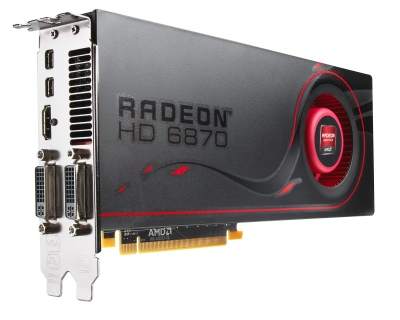AMD has introduced its long-awaited Radeon HD 6800 series which promises to catapult PC gaming to new levels of realism.
Indeed, the 6800 (Barts) GPUs tap AMD’s second-gen DX11 capable architecture to provide more than 30 percent greater game performance compared to competing graphics cards.
In addition, the 6800 series offers significantly improved tessellation execution.

“Remember, excessive use of tessellation is often inefficient for today’s GPUs – as it leads to poor utilization of rasterizers, overshading and an over-abundance of polygon edges. Clearly, the brute force approach is wasteful,” AMD exec Eric Demers told TG Daily.
“But the 6800 lineup tessellates the right way, as it focuses on the most efficient usage models. You ideally want ~16 pixels per polygon, as this facilitates the best balance of image quality and performance.”
According to Demers, the 6800’s adaptive tessellation achieves optimal quality and performance because it uses high levels only for objects close to the viewer, on silhouette edges, or in areas with fine detail.

“And of course, the cards use low levels for distant or simple objects to improve performance and avoid geometry aliasing problems,” he said.
Demers added that the 6800 also supports morphological anti-aliasing, which includes a post-process filtering technique accelerated with DirectCompute.
“As such, the 6800 lineup is capable of delivering full-scene anti-aliasing that is not limited to polygon edges or alpha-tested surfaces.
“In addition, the GPUs offer improved Anisotropic Filtering via a refined algorithm that addresses visible discontinuities in very noisy textures. This results in smoother transitions between filter levels, while ensuring full performance and angle independence.”
Other noteable specs include:
6870 ($239)
- 2.0 TFLOPs of compute power
- 900MHz core clock speed
- 1120 stream processors
- 32 ROPs
- 1GB GDDR5 frame buffer
- 256 bit, 4.2 Gbps memory width/speed
- 151W/19W load/idle board power
- 255 mm die size
- 1.7 billion transistors
- 900 million polygons/sec geometry throughput
- 14 SIMD engines
- 56 texture units
- 2 x miniDP (DP 1.2), HDMI 1.4a, 2x DVI (DL-DVI+SL-DVI)
6850 ($179)
- 1.5 TFLOPs of compute power
- 775 MHz core clock speed
- 960 stream processors
- 32 ROPs
- 1GB GDDR5 frame buffer
- 256 bit, 4.0 Gbps memory width/speed
- 127W/19W load/idle board power
- 2 x miniDP (DP 1.2), HDMI 1.4a, 2x DVI (DL-DVI+SL-DVI)






